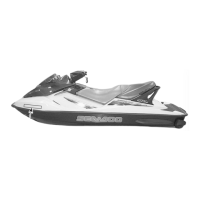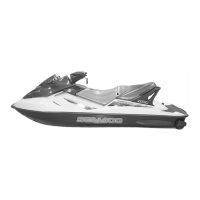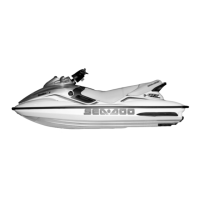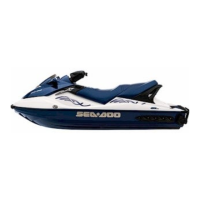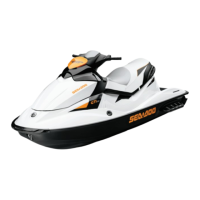Helmets
Some Important Considerations
Helmets are designed to offer some
degree of protection in case of im-
pact to the head. In most motorized
sports, the benefits of wearing a hel-
met clearly outweigh the draw back s.
However, in the case of motorized wa-
tersports such as riding personal wa-
tercraft, this is not necessarily true as
there a re some particular risks associ-
ated with the water.
Benefits
A helmet helps to reduce the risk of
injury in case of a head impact against
a ha rd surface such as another craft,
for e xample, in th e case of a collision.
Similarly, a helmet with a chinguard
might help prevent injuries to the face,
jaw, or teeth.
Risks
On the other hand, in some situations
when falling off the watercraft, hel-
mets have a tendency to catch the wa-
ter, like a “bucket”, and put severe
stresses on the neck or s pine. This
could result in choking, severe or per-
manent neck or spine injury, or death.
Helmets may also interfere with pe-
ripheral vision and hearing, or increase
fatigue, which could contribute to in-
crease the risk of a co llision.
Weighing the Risks vs Benefits
In order to decide whether or not you
should wear a helmet, it is best to con-
sider the p articular environment you
will be riding in, as well as other fac-
tors such as personal experience. Will
there b e a lot of traffic on the water?
What is your riding style?
The Bottom Line
Since each option min im ize s some
risks, but increases others, before
each ride you m ust decide whether to
wear a helmet or not based on your
particular situation.
Ifyoudecidetowearahelmet,you
must then decide what type is the
most appropriate for the circum-
stances. Look for helmets that meet
DOT or Snell standards, and if possi-
ble, choose one designed for motor-
ized waters ports.
Racing
Due to the nature of competition and
the proximity of other crafts, BRP rec-
ommends wearing a helmet in close
quarter PWC racing activities. Always
follow the helmet requirements of the
sanctioning organization.
To Bring
Always ca rry the regulatory safety
items and have them conveniently
on board available for use. Check
the local regulations or consult your
authorized Sea-Doo dealer. Such re-
quired safety items usually include,
without limitation, a sound signaling
device such as a wh istle, a watertight
flashlight or approved flares, a buoy-
ant heaving line, an anchor and rope*,
a bailer*, and an appropriate fire ex-
tinguisher*. The items marked w ith
a “*” are not required in Canada if all
persons on board a PWC are wearing
aPFD.
A cellular telephone in a waterproof
bag or con tain er has also bee n found
to be beneficial to boaters when in dis-
tress or just for contacting someone
on shore.
12
___________
SAFETY INFORMATION
___________
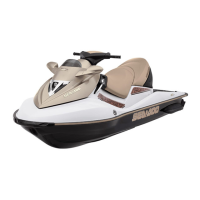
